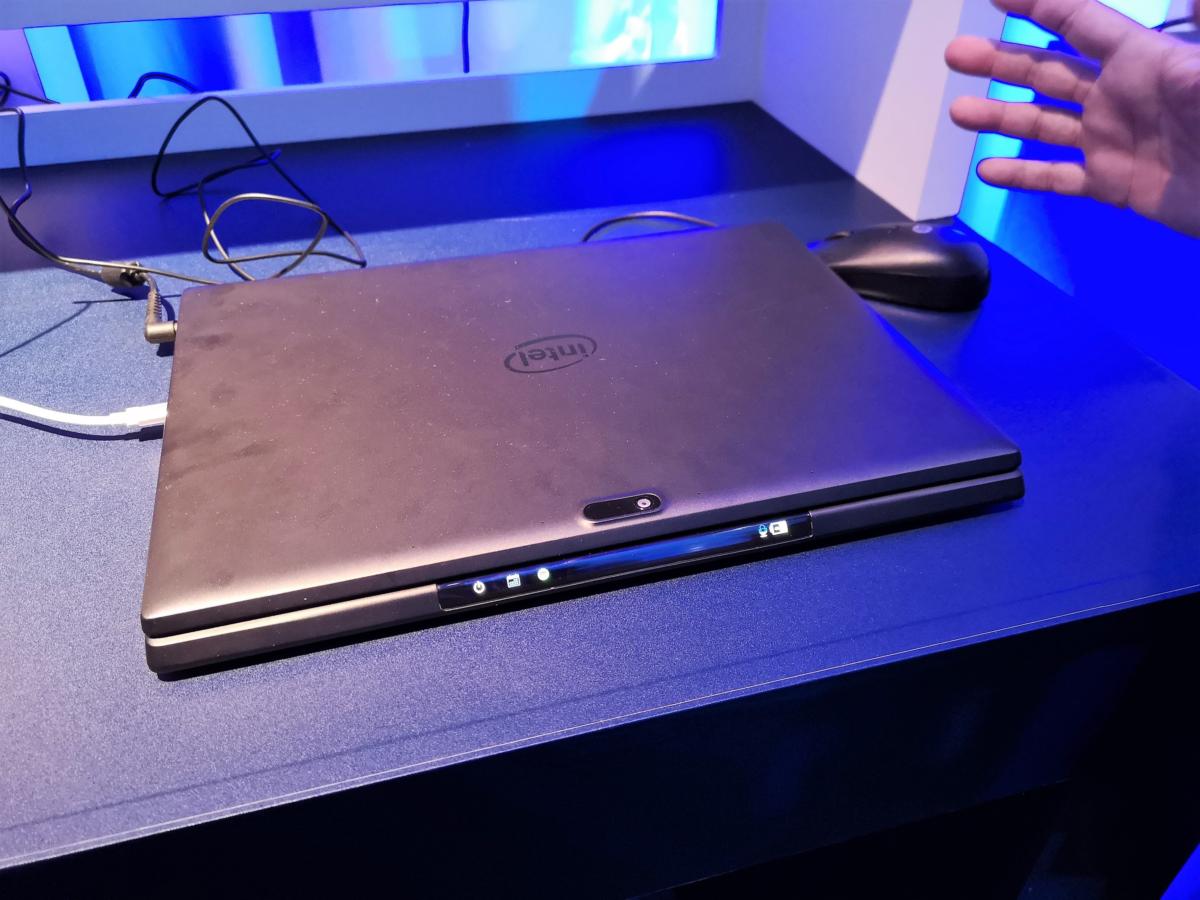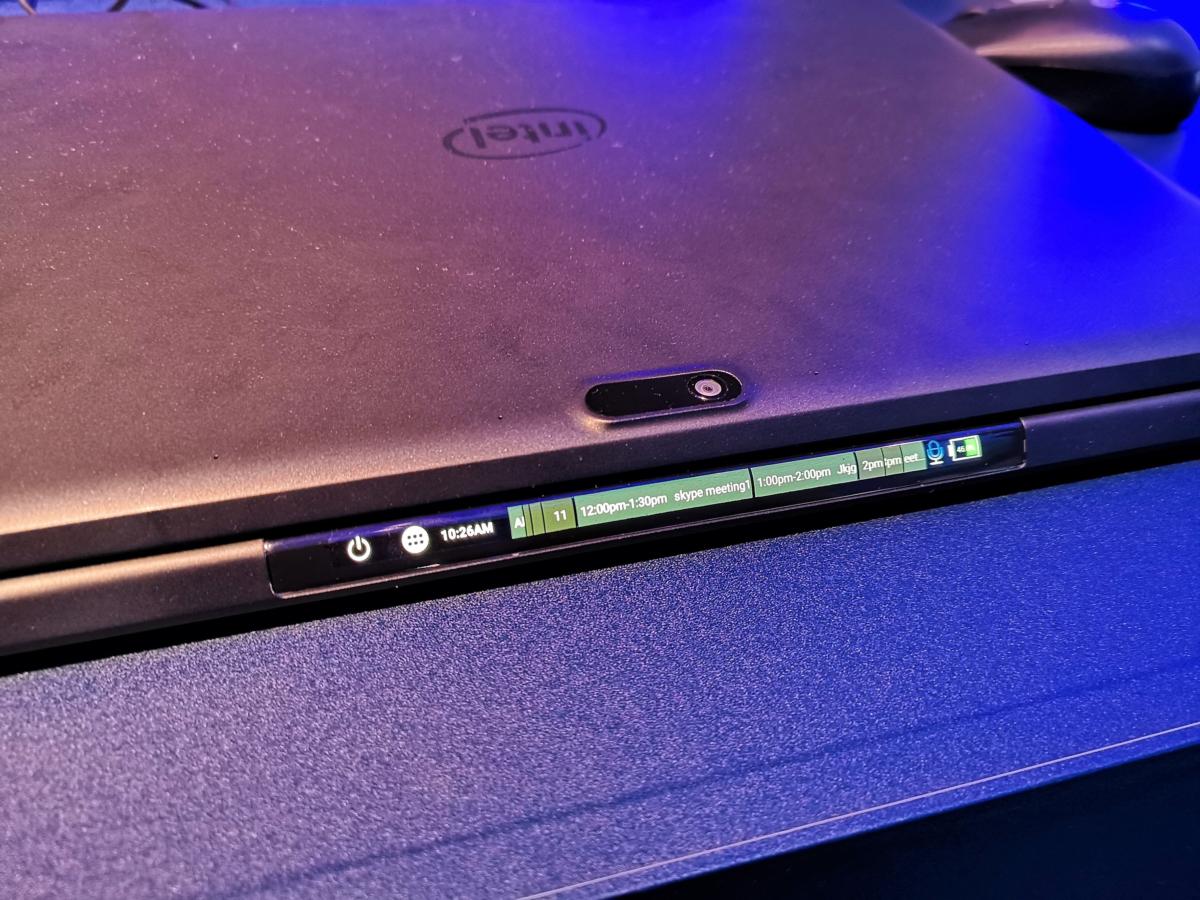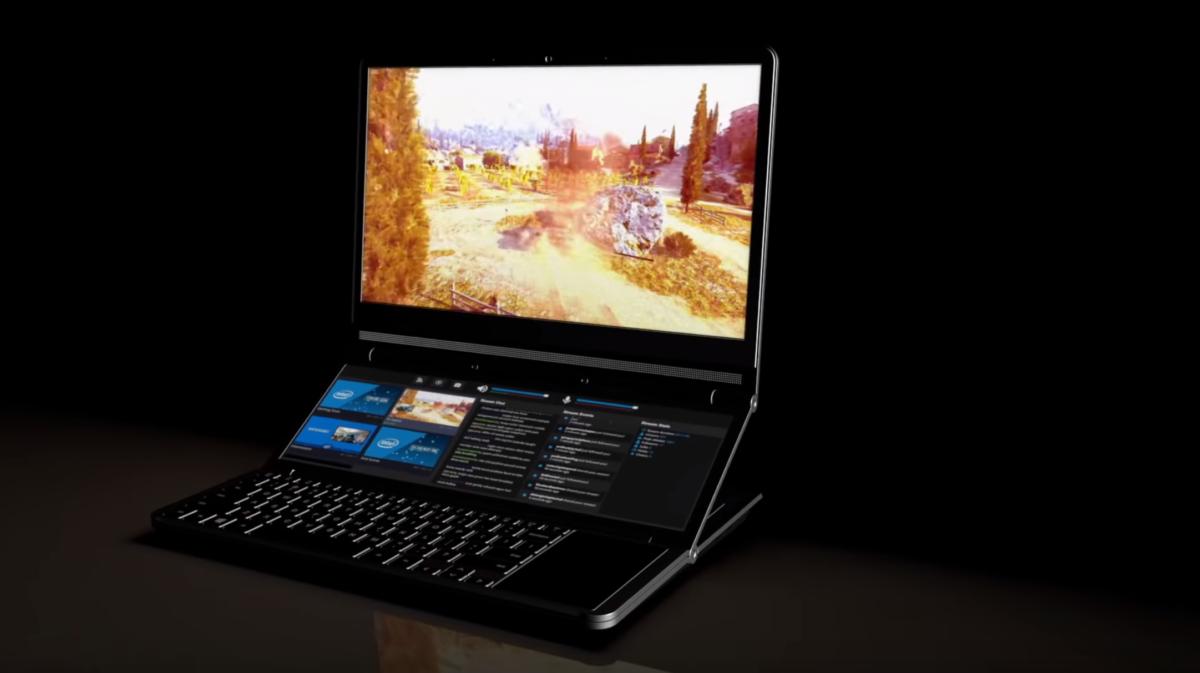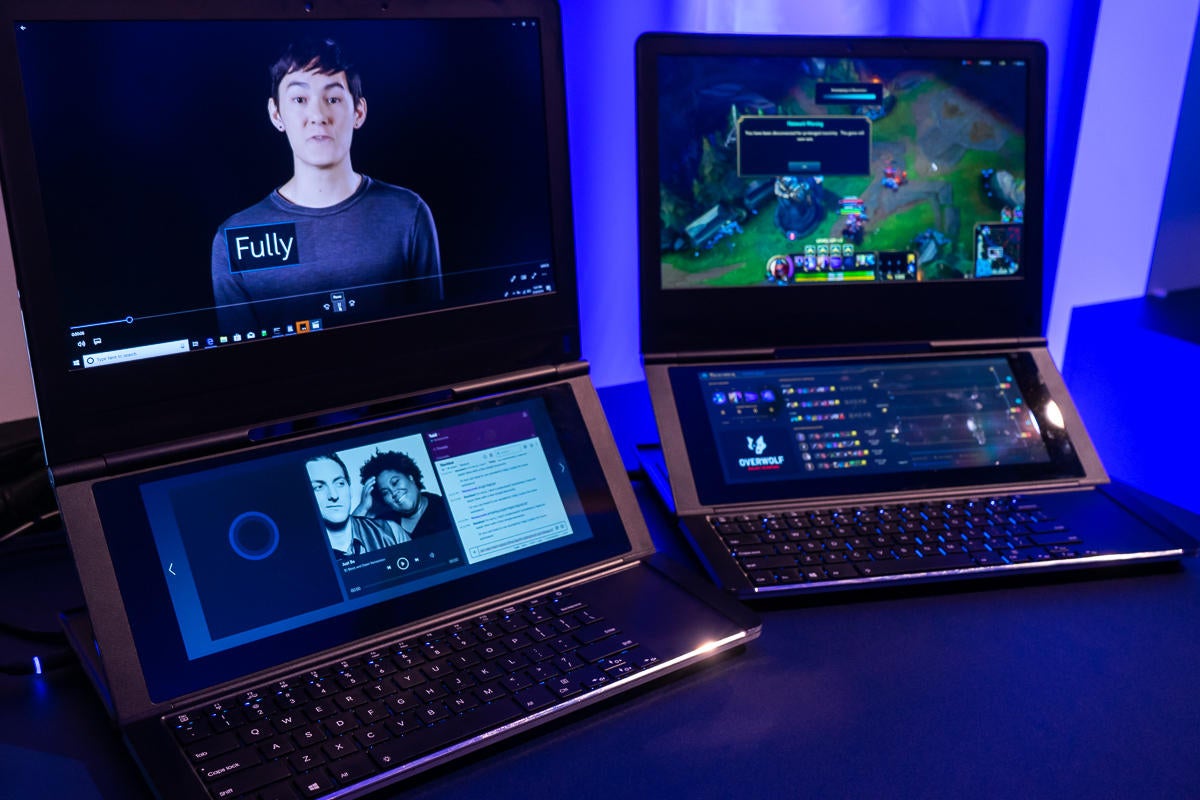Intel dreams of the PC’s future: ‘Ambient PCs,’ fancy fabrics, and a monster dual-display gaming rig - baileyhavereste
adam_patrick_murray@idg.com Intel shows off its latest concept PC at Computex: the Ambient Personal computer. Will an edge showing be in your next laptop?
Intel showed off its two-fold-screen "Tiger Rapids" concept PC unlikely year at Computex. This year, dual-block out laptops became reality. In real time, it's along to the close innovation: the Ambient Personal computer, settled around an "edge display" that will allow you to interact with your laptop without even opening it.
That's not to say that Intel doesn't continue to innovate in dual-screen PCs. Its "Honeycomb Glacier" concept PC puts an additional rectangular screen above the keyboard—and so lifts IT and the conventional presentation on an upward hinge. Intel also continuing the course set by HP's leather-bound and Grant Wood PCs past display off some fabric-clad, dual-screen displays with "Twin Rivers".
All told, Intel's concept PCs look to be well received away PC vendors, who are using the innovative designs to disperse the idea that the PC is dying. Let's pitch in.
The Ambient PC
What Intel is calling the Ambient Microcomputer looks slightly familiar—imagine a Galaxy Notation Edge, but as a laptop. That should make you an idea of what the Close Personal computer looks like patc closed: a bladed, bowed flat solid of glass pokes out, with just sufficiency board for a row of icons.
 Bull's eye Hachman / IDG
Bull's eye Hachman / IDG Intel's Ambient PC.
That tabloid of meth is a touch screen, still, and when I touched the icons small apps seemed to launch. A calendar open aweigh a sliding row of blocked-verboten appointments and their multiplication; when I touched the Spotify icon, I could hear faint music push its issue of the laptop's speakers. (No of the speakers appeared to be exposed to the outside world-wide, which meant that the audio was a little covered.)
That's not all, though. Inside the Ambient PC laptop computer lurks an array of far-field microphones, which triggered Amazon's Alexa when another user radius a wake word.
 Mark Hachman / IDG
Mark Hachman / IDG The Intel Ambient Personal computer's "home silver screen".
A more newsworthy development is Intel's decision to admit an ambient, 360-degree camera. Folded shut, what you might usually toy with a "rear-veneer" camera as an alternative points upward. Intel executives said that the camera is in fact a 360-degree camera, then that when a user approaches the laptop computer, it can identify them via Windows Hello's nervus facialis recognition and automatically log them in, presumably indeed that they could and so access the calendar and other applications.
In a world where estimator vendors build privacy shutters into business PCs, the 360-degree camera was an interesting choice.
 Brand Hachman / IDG
Brand Hachman / IDG A calendar app running on the Ambient Personal computer.
What Intel's showing inside the Close PC feels like a topic that would Dame Muriel Spark some heated moot inside reckoner makers: wouldn't users be tempted to draw their phones to consult their calendar or play music? Surgery is that olive-sized secondary covert a agency to communicate notifications to the exploiter without the social implications of pulling stunned a smartphone, and in a sense that sips just a tiny bit of power?
Pai Rivers
Personal computer enthusiasts don't all bask the Saame aesthetic. Some appear to prefer middling brutalist cases that maximize operation, perhaps with much glowy RGB lighting American Samoa accents; others fetishize reductivism, prizing clean, simple lines. HP's leather-clad Spectre Folio and the wood-lined Invidia laptop computer the fellowship showed unsatisfactory at Computex steer in a more organic direction.
 Tag Hachman / IDG
Tag Hachman / IDG Intel's "Twin River" paradigm.
Intel's Twin Rivers image English hawthorn remind you of the Alcantara fabic ill-used by Microsoft's Surface Laptop. The Twin Rivers notebook houses two 12-inch touchscreen displays facing one another, giving it the appearance of a content-uptake machine more than one that you would use to type a college newspaper publisher—you'd be typing happening glass, later whol. The demonstration that Intel had ready was superb, with some screens showing off a mirthful record book, all with animation when you turned the page.
Incredibly, Intel obviously managed to put a U-serial central processing unit, rather than the lower-power Y-serial chip, interior this fanless PC. It folded upward neatly into a single compact, cozy package.
Honeycomb Glacier
If you've been paying attention during Computex, then you know that Intel's dual-screen "Honeycomb Glacier" is already flirting with reality: the Asus Zenbook Duet Pro somehow manages to jam some a 15.6-inch screen and a 14-inch screen into a 5.5 lbs laptop computer by embedding the immature riddle above the keyboard. It's a crazy combination.
 Intel
Intel Intel' "Honeycomb Glacier" conception rises out of its humble for a more ergonomic feel.
Intel's Honeycomb Glacier concept asks what could you accomplish if you could raise that display, again? And past "again," we mean victimization non one, but two hinges—one to raise the smaller, stern, secondary screen, and another to lift the top off screen. Incentive: That additional hinge manages to encouragement the top screen closer to eye level.
Intel first showed bump off Honeycomb Glacier to journalists in March, though at the time the device wasn't functional, and we weren't allowed to talk of it. At Computex, Intel revealed IT in its full gaming-quality glory. The secondary screen, Intel says, is a 12.3-inch (1,920 x 720) panel, while the meridian screen is 15.6 inches—the same dimensions as the Asus Zenbook Duo Pro. The top screen rocks a 1080p resolution, though, for power concerns.
 Intel
Intel Intel appears to consider Honeycomb Glacier, or a laptop built around the construct, as a vehicle for its new "Ice Lake" 10th-gen processors. Raising the secondary screen also allows the notebook to vent fire u from the fathom chassis into the extramural world, which made it particularly appropriate for gaming. The plan is to build in a distinct GPU—which, if everything pans out, will eventually be an Intel-made Xe chip.
Editor's note: This article in the beginning published on May 29, 2019, but was updated to include the video at top showing Intel's Ambient PC.
Bank note: When you purchase something after clicking golf links in our articles, we may earn a small military commission. Read our affiliate link policy for more details.
As PCWorld's senior editor program, Mark focuses connected Microsoft news and chip technology, among other beats. He has formerly written for PCMag, BYTE, Slashdot, eWEEK, and ReadWrite.
Source: https://www.pcworld.com/article/397541/intel-concept-pcs-computex-ambient-pc-honeycomb-glacier-twin-rivers.html
Posted by: baileyhavereste.blogspot.com


0 Response to "Intel dreams of the PC’s future: ‘Ambient PCs,’ fancy fabrics, and a monster dual-display gaming rig - baileyhavereste"
Post a Comment